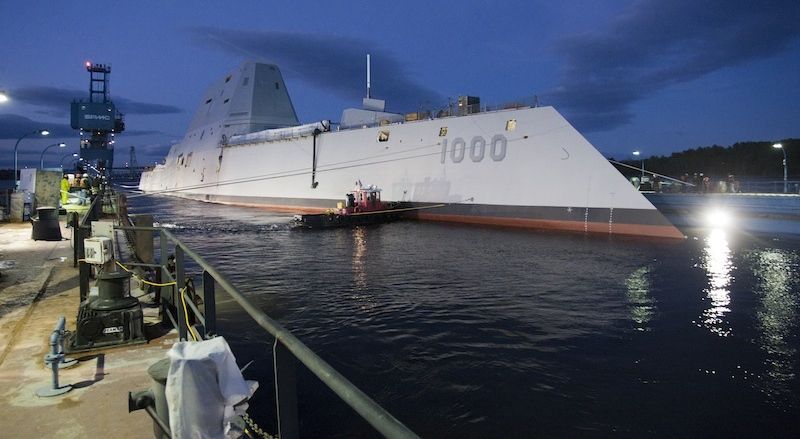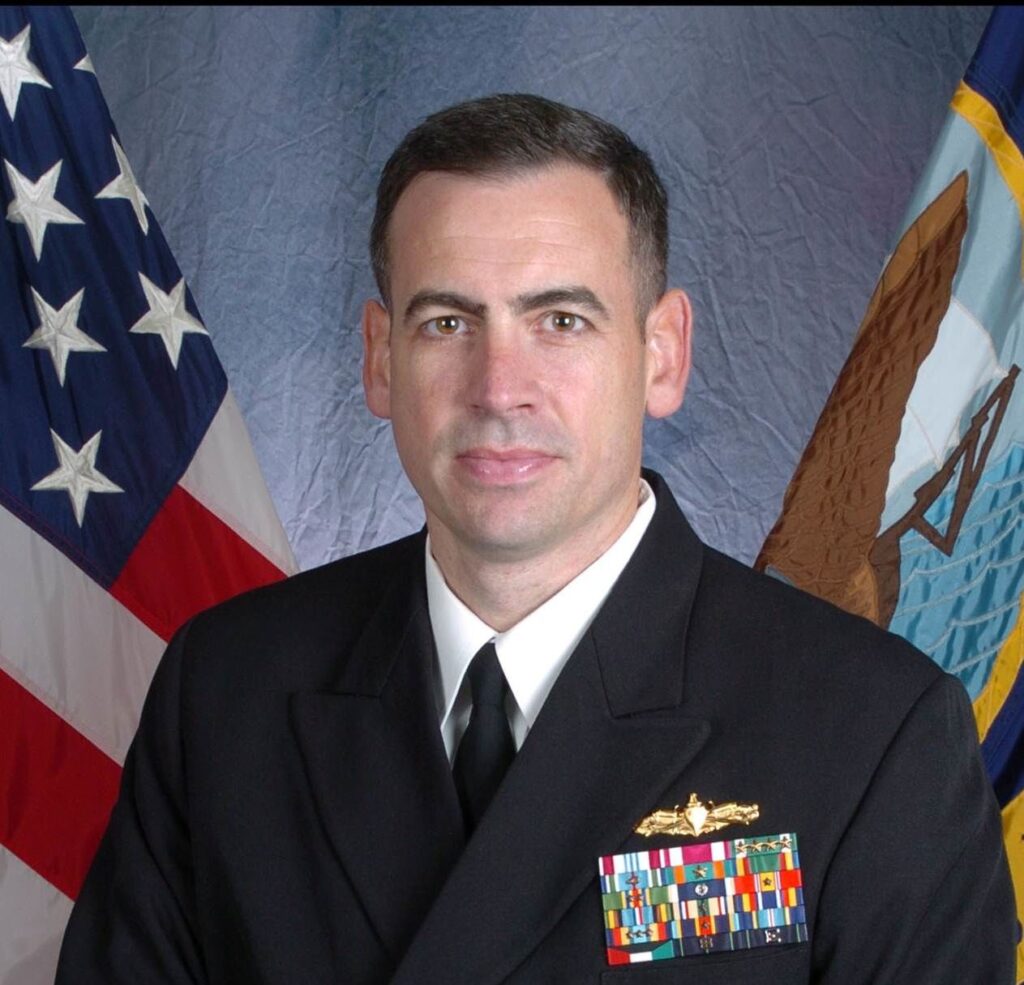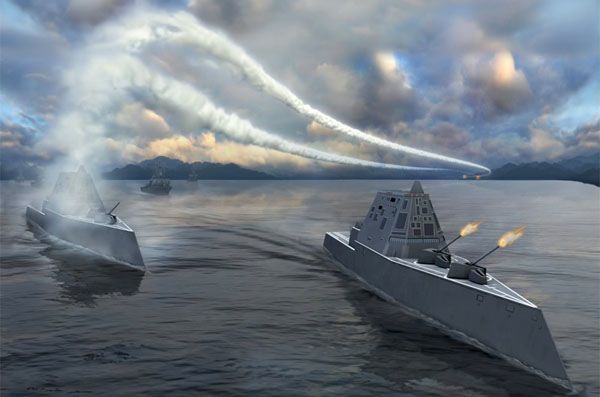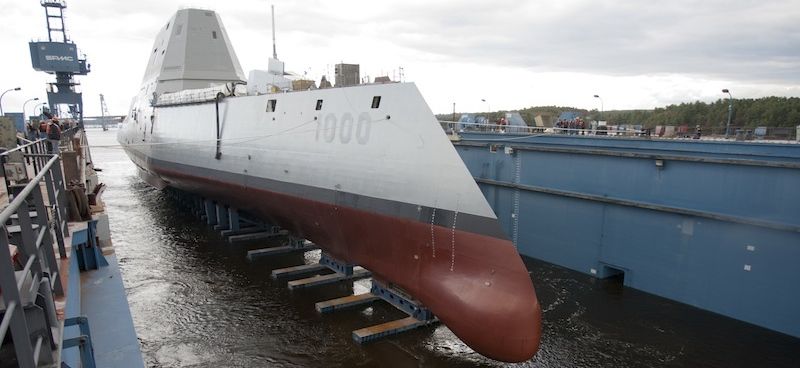Capt. Kirk Takes Command Of Hot New Ship – Really! USS Zumwalt Sails
Posted on
WASHINGTON: To boldly go in a revolutionary ship where no one has commanded before. Why the clumsy Star Trek reference? Because the Navy’s newest, stealthy, most radical ship, the USS Zumwalt, will be commanded by the fabulously named Capt. James A. Kirk. The Navy couldn’t make something like this up, could they?
The Zumwalt, launched on Monday, contains a plethora of new weapons, a radical power plant and a controversial new hull design designed to reduce its radar signature. And it really is commanded by Capt. James A. Kirk. As aficionados of the original Star Trek series know, the full name of the USS Enterprise’s commander was James Tiberius Kirk, so there should be no mistaking the two men.
How important is the first of the three Zumwalt-class ships to the US Navy? One of America’s preeminent naval experts, Norm Polmar, put it simply:
“The Zumwalt introduces new hull form and machinery concepts that could be the harbinger of the next generation of surface warships. In some respects the advancements are comparable to the Monitor of Civil War fame that revolutionized naval ship design.”
One of the country’s top defense lawmakers, Rep. Randy Forbes, tells us the Zumwalt and her sister ships “are poised to define surface ship design for years to come. It is game-changing technologies like those found on the Zumwalt-class that will enable the Navy’s future dominance in the decades ahead.”
What makes the ship so powerful a tool? Polmar says “the ship is the perfect platform for deployment of rail guns and laser weapons because of her electric-oriented power plant.” That advanced power plant provides much more power — up to 78 megawatts of power, enough to power about 47,000 American homes — that can be used by weapons than existing non-nuclear ships. While it was originally designed to provide land attack support (think a high-tech battleship), that role has been supplemented. Missile defense now features more prominently. Polmar’s assessment needs to be taken seriously. He has advised three Navy Secretaries, two Chiefs of Naval Operations and has 50 books — mostly on the Navy — to his credit.
Scott Truver, a respected consultant on naval issues, pointed to the Zumwalt’s much smaller crew size as another fundamental shift for the Navy:
When upwards of 70% of the total ownership cost (TOC) of an ship class is directly related to people, anything that can reduce manning — without diminishing warfighting-first and readiness capabilities, of course — will be major contributors to keeping TOCs in check. The DDG-1000 (Zumwalt) class is the first U.S. Navy warship to fully embrace the precepts of human systems integration in the design and engineering phase—when some 60 percent of a warships’ TOC (Total Operating Costs) are already locked in…. In short, lessons learned from Zumwalt have the potential to ripple throughout the service, generating a real revolution at sea!
He also notes the exotic weapons the Zumwalt can use: “The power-generation and switching and all-electric propulsion systems will enable truly exotic weapons—lasers and electromagnetic rail guns and who knows what else—to be fielded.”
One of the longer term, and most interesting aspects, of the Zumwalt class is the fact that growth has been engineered into the system. “The fifteen-thousand-ton ship has a 10 percent growth margin, equating to some 1,500 tons of potential increase that would enable the ship to host new sensors and weapons as technologies evolve. Inserting such systems into DDG 1000 throughout the next decades and then improving on them, based on their operational effectiveness and ability to deal with emerging threats, will define what the Navy will look like — and how it can fight — in the future,” Truver and co-author George V. Galdorisi wrote in an article for the Naval War College Review three years ago.
The Zumwalt has run into rough seas during its development. Several years ago a prominent naval architect claimed its striking tumblehome hull could lead to the ship rolling over in heavy seas. That assessment appears to have been put to rest by detailed tests of a one-quarter model. And the class shrank from a projected 32 ships at inception to just three. In part because of the shrinking size of the class, the cost per ship ballooned.
The first ship in the Zumwalt class was dealt a final indignity during the shutdown of the federal government. Its Oct. 19 christening was postponed.
“It is incredibly unfortunate that we are being forced to cancel the christening ceremony for this great warship,” Navy Secretary Ray Mabus said in a statement, “but the ongoing government shutdown prevents us from being able to honor Admiral Zumwalt’s memory with a ceremony befitting his and his family’s legacy of service to our Nation and our Navy.”
But now, at last, the Zumwalt — and Captain Kirk — are on their way.
Subscribe to our newsletter
Promotions, new products and sales. Directly to your inbox.




